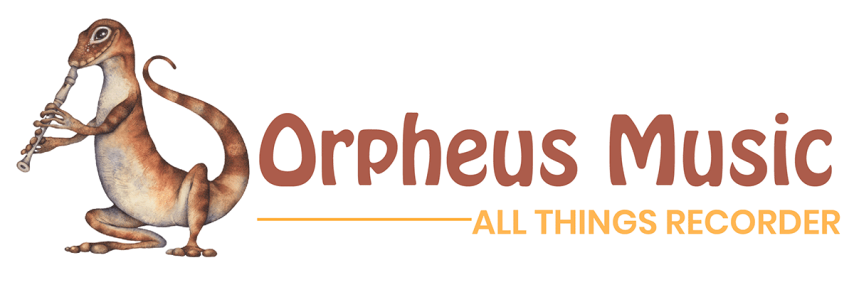No products
Prices are tax included
Tier 1: You can play one instrument or fingering type (ie, either C [descant] or F [treble]) within a range of 1 and a half octaves.
- If you currently use C fingering, you are keen to take on learning F fingering during the course – and vice versa if you currently use F fingering;
- You may still be relatively new to music and/or the recorder and still be learning the fundamentals of music theory;
- Your ability to read music may still be basic – however, music in this tier has simple rhythms and the pieces have nothing more than 1-2 sharps or flats;
- The focus is on the basics of breath, articulation, ensemble skills and increasing the number of available notes.
Tier 2: You are comfortable with both C and F fingerings.
- You must be able to read for and play descant/tenor and treble;
- You might be interested in learning to play bass during the course;
- Aspects you would like to improve include: sight reading ability; holding your own part; ensemble skills;
- You are interested in learning more about articulation and expanding your awareness of musical interpretation.
Tier 3: In addition to Tier 2 requirements, you can play the bass recorder and are prepared to play it when requested (unless you have physical restrictions).
- You are keen to learn to read treble up the octave;
- You are a competent sight-reader (might need a bit of practice on tricky fast parts!);
- You can hold your part in most pieces and sometimes read from a score;
- If you get lost in a piece you can usually find your way back in;
- You are keen for a challenge and are willing to learn music with more than two sharps or flats;
- You are prepared to take on new articulations, alternative fingerings and learn music with a minim beat (3/2, 4,2).
Tier 4: In addition to Tier 2 and Tier 3 requirements you will need to have your own bass recorder, and have it with you at each session (unless you have physical restrictions)
- You can read treble up the octave and bass in the treble clef;
- You are a fluent sight reader - semi-quaver passages, frequent accidentals, difficult rhythms and high notes do not deter you;
- You have experience in holding a part on your own and reading off a score;
- You would like to develop ensemble and tuning skills;
- You are seeking to be challenged further in your finger technique, musical interpretation and stylistic choices;
- You want to learn a variety of genres and are willing to learn modern music, including pieces that use extended techniques.
Tier 5: In addition to Tier 2, 3 and 4 requirements, you will prepare your set works to a high standard and be prepared to play them in masterclass-style sessions.
- Performing in front of others to a concert standard is something you have experienced and want to actively develop;
- You are willing to learn music from all parts of the recorder repertoire (medieval, renaissance, baroque, other cultures along with contemporary music that includes extended techniques and graphic notation);
- You are willing to play any part on the score and are experienced in tuning your instrument;
- Challenging time signatures, advanced techniques, complex articulation patterns and further developing breath control are all concepts you are excited by;
- Refining your ideas regarding interpretation and style are important to you.
If you can take advantage of the Pre Courses to up skill in certain areas like playing the bass recorder or reading up an octave on the treble.
How are participants allocated a group?
This process takes place over several months and includes the following:
- Tutor feedback. At the end of each course the tutors give feedback about their technique class as to whether each participant was in the correct level in relation to their group colleagues or whether they could go up or down.
- Participants own evaluation of their playing standard in the application process (with reference to the Tiers described below)
- Participants that have not previously attended are contacted by telephone and their experience/playing level is discussed. Tutors that may have had previous experience with a player new to our course are asked for their perspectives.
- After the groups have been formed in their initial draft form, further input is sought from the tutors once they are able to view each group as a whole.
What do I do if I feel I am in the wrong group?
Talk to us! Sometimes changes are possible, sometimes they are not – we will discuss any requests in detail with the tutors involved. Please remember that a participant’s opinion of their own playing level is not always accurate (either in the self-deprecating direction or the self-affirming one)! Whatever the outcome, rest assured that our goal is to do what is best for all of the participants.
I only play one recorder and I feel unsure about trying to learn another one. Can I still participate?
We have a New Learners Stream that can accommodate those who play only one recorder - please refer to the Tiers above.
What is F and C fingering?
The recorder family is configured so that the lowest note playable on any recorder is either an F or a C. The garklein’s lowest note is a C, sopranino is an F, descant is a C, treble is an F and so on. This means that so far as reading notation is concerned, once both fingerings have been learnt, almost any recorder can be played.
